Two lenses shown in figure. Are illuminated by a beam of parallel light from the left. Lens B is then moved slowly toward lens A. the beam emerging from lens B is
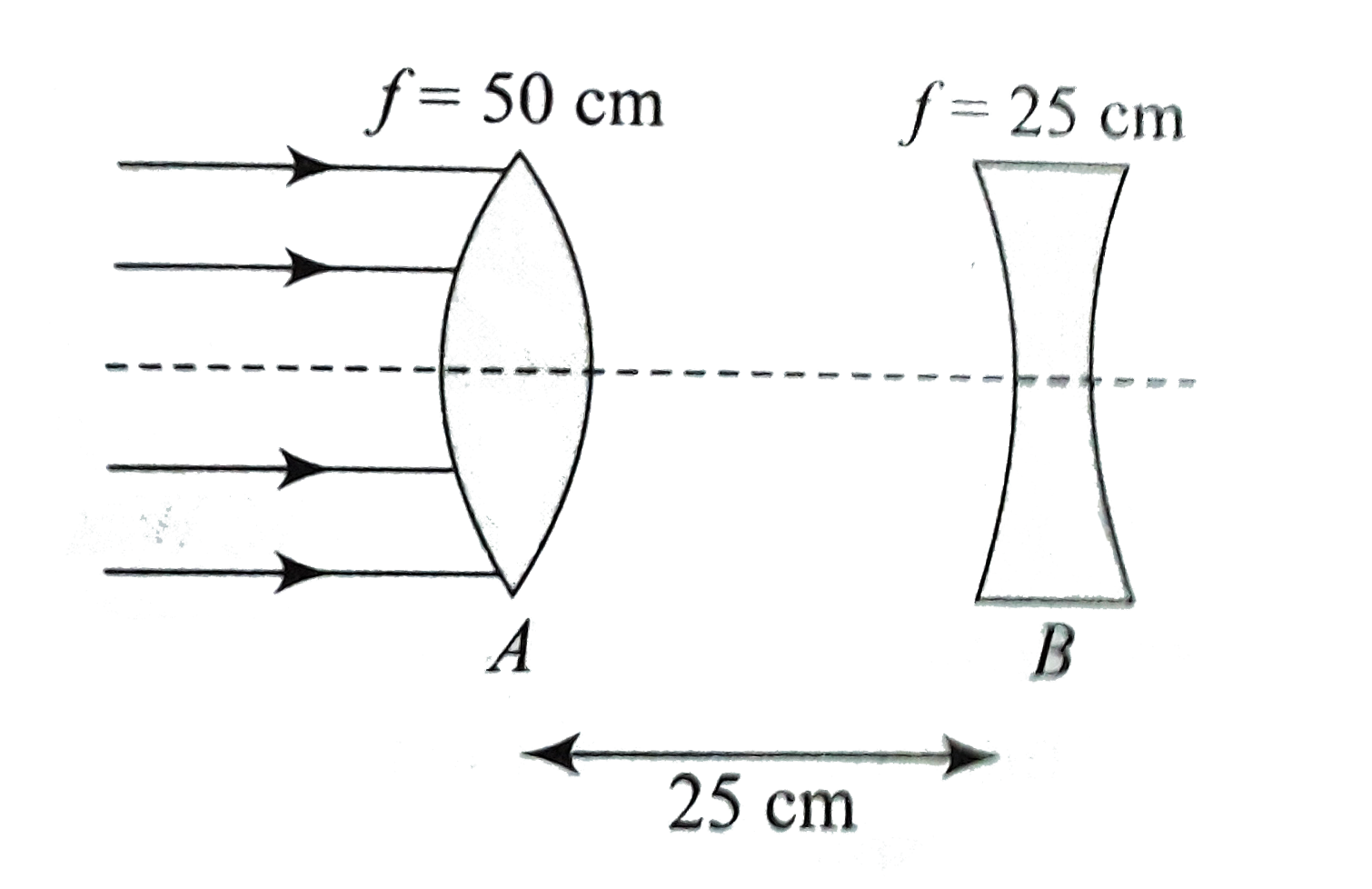
always diverging
initially parallel and then diverging
always parallel
initially converging and then parallel
The correct Answer is:b.
Initially, the object for lensB( the lens formed by lens A) is at its focus, so rays are parallel.
As the separation between A and B decreses, the object for B is lying away from focus and hence, the rays are diverged.
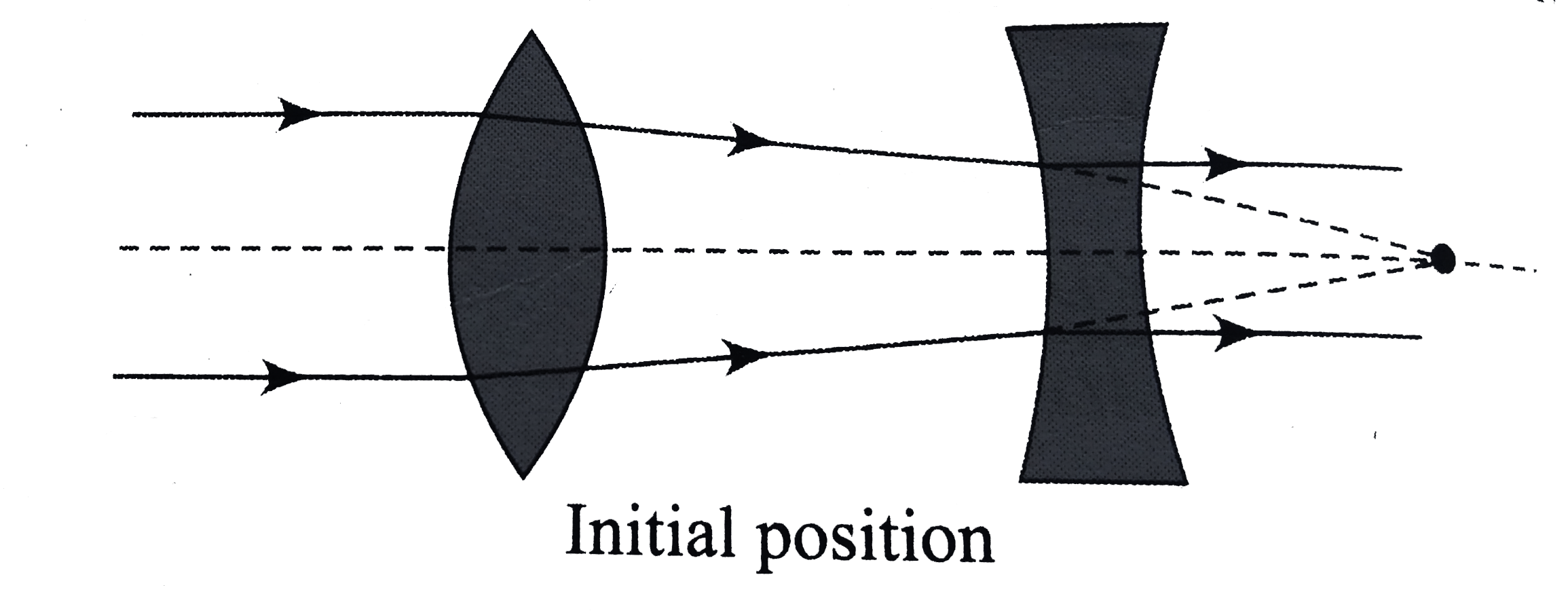
S01.png)
Topper's Solved these Questions
- BOOK - CENGAGE PHYSICSCHAPTER - GEOMETRICAL OPTICSEXERCISE - Assertion-Reasoninig2videos
GEOMETRICAL OPTICS
- BOOK - CENGAGE PHYSICSCHAPTER - GEOMETRICAL OPTICSEXERCISE - Linked Comprehension51videos
GEOMETRICAL OPTICS
- BOOK - CENGAGE PHYSICSCHAPTER - GEOMETRICAL OPTICSEXERCISE - Subjective26videos
GEOMETRICAL OPTICS
- BOOK - CENGAGE PHYSICSCHAPTER - FRICTIONEXERCISE - QUESTION BANK1videos
FRICTION
- BOOK - CENGAGE PHYSICSCHAPTER - GRAVITATIONEXERCISE - Question Bank39videos
GRAVITATION
Similar Questions
Which of the two diverges a beam of parallel rays of light : convex lens or concave lens ?
View SolutionEuipotential surfaces in a region of electric field are shaped as shown in the figure. The potential of field lines is increasing as one moves to right. A thin beam of electrons enters the region from left along the axis. Give qualitative arguments to show that the region will act as an electrostatic lens trying to focus the beam of electrons.
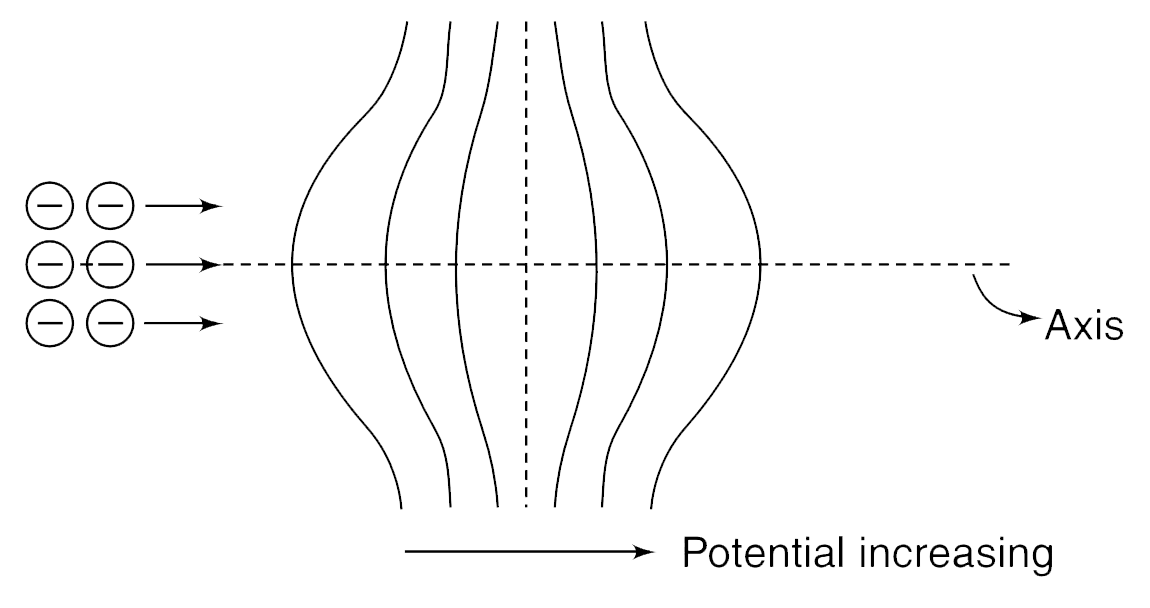 View Solution
View Solution
Knowledge Check
- Question 1 - Select One
Two thin lenses are placed 5cm apart along the same axis and illuminted with a beam of light parallel to that axis. The first lens in the path of the beam is a converging lens of focal length 10cm whereas the second is a diverging lens of focal length 5cm. If the second lens if now moved toward the first, the emergent light
Aremains parallelBremains convergentCremains divergentDchanges form parallel to divergent - Question 2 - Select One
In the arrangement shown in figure, O is the object. An observer is to the left of convex lens and looking towards lens. The observer will see an image
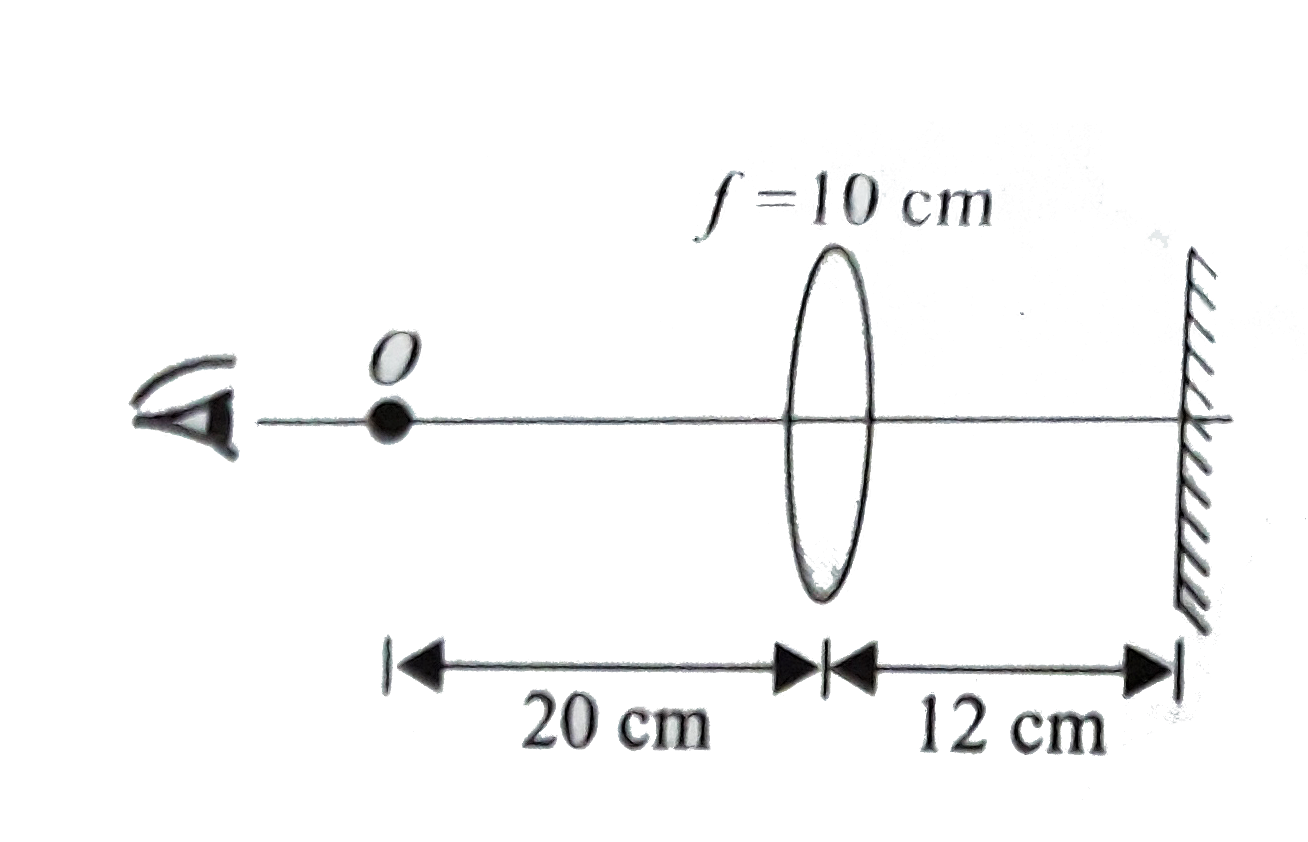 Abehind the mirrorBbetween lens and mirrorCto the left of lensDno image will be seen
Abehind the mirrorBbetween lens and mirrorCto the left of lensDno image will be seen - Question 3 - Select One
A convex lens of focal length 1.0m and a concave lens of focal length9.25m are 0.75m apart. A parallel beam of light is incident on the convex lens. The beam emerging after refraction from both lenses is
Aparallell to the principal axisBconvergentCdivergentDnone of the above
A student focuses the image of a well illuminated distant object on a screen using a convex lens. After that the gradually moves the object towards the lens and each time focuses its image on the screen by adjucting the lens.
(a) In which direction -towards the screen or away from the screen, does he move the lens ?
(b)What happens to the size of the image-does it decrease or increase ?
(c) What happens to the image on the screen when he moves the object very close to the lens ?View SolutionA convex lens forms an image of an object on a screen 30 cm from the lens. When the lens is moved 90 cm towards the object, then the image is again formed on the screen. Then, the focal length of the lens is
View SolutionA parallel beam of light falls successively on a thin convex lens of focal length 40 cm and then ono a thini convex lens of focal length 10cm as shown in figure.
In figure, the second lens is an equiconcave lens of focal length 10cm and made of a material of refractive index 1.5. In both the cases, the second lens has an aperture equal to 1cm.
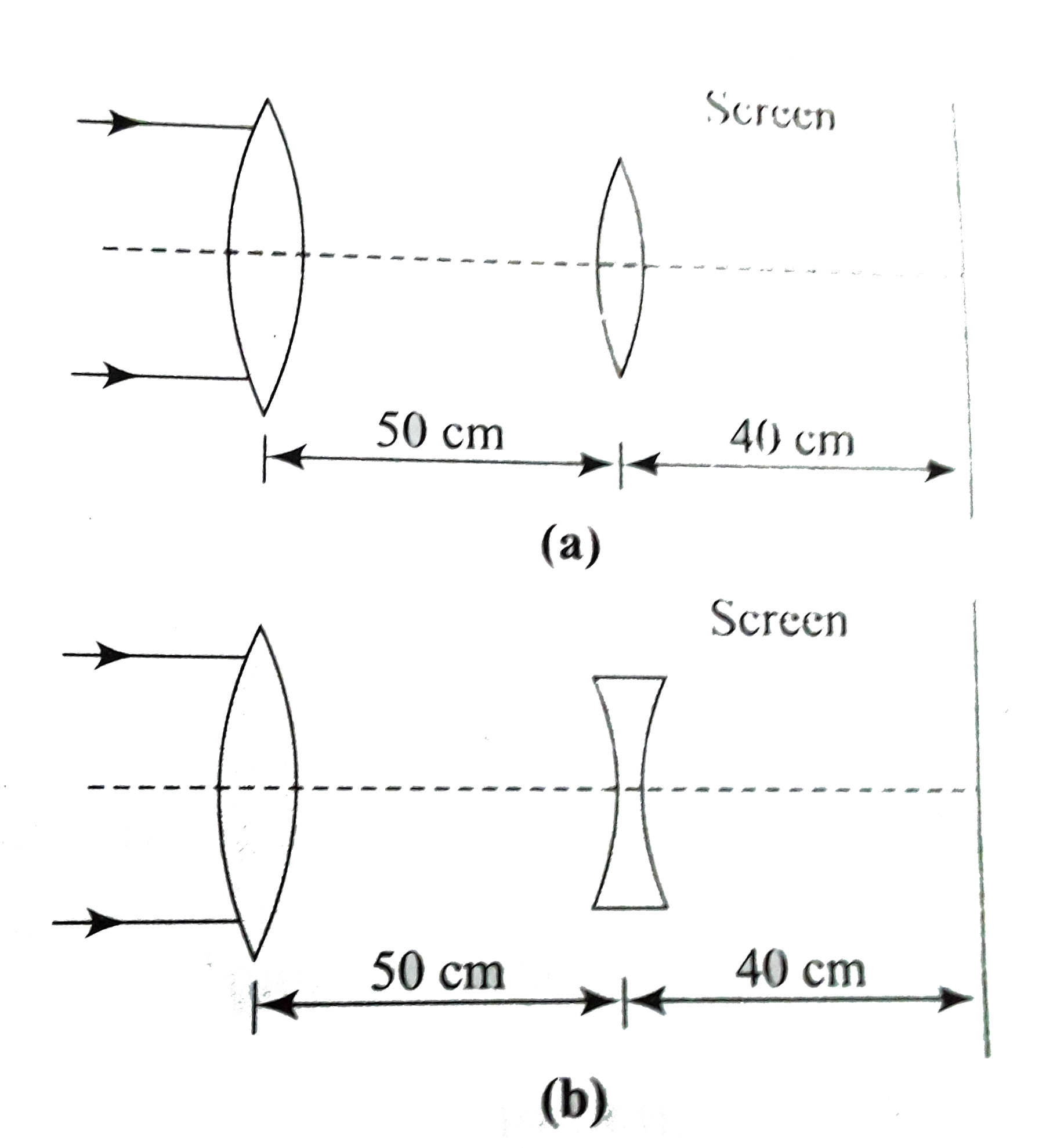
Q. Compare the area illuminated by the beam of light on the screen, which passes through the second lens in the two cases. The ratio (A2/A1) will beView SolutionA convex lens of focal length 20cm and a concave lens of focal length f are mounted coaxially 5cm apart. Parallel beam of light incident on the convex lens emerges from the concave lens as a parallel beam. Then, f in cm is
View SolutionList-I gives different lens configurations. The radius of curvature of each surface is R. Rays of light parallel to the axis of lens from left of lens traversing through the lens get focused at distance f from the lens. List-II gives corresponding values of magnitudes of f (mu represent refractive index):-
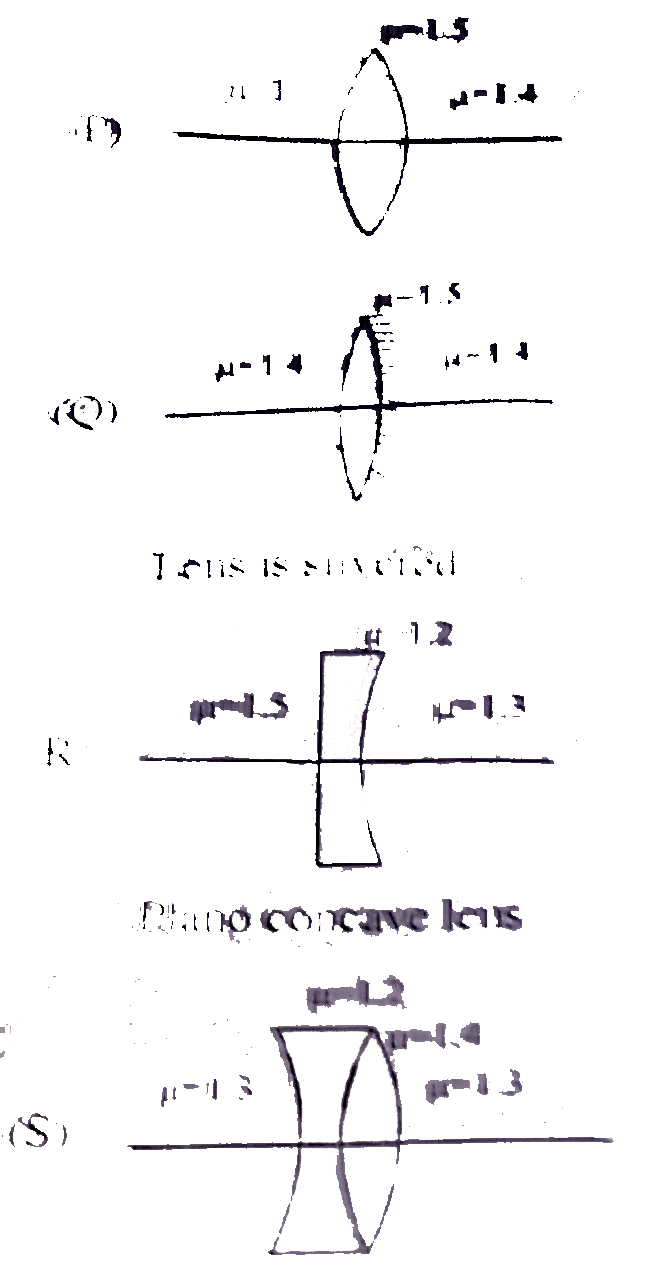 View Solution
View Solution

